On 26/27th June 2021, a team of determined cyclists will aim to set a Guinness World Record for the fastest cycling journey from Land’s End to John O’Groats (LEJOG) in a relay team format and here we talk about their fuelling strategy.
For some background information on this exciting challenge, read our recently published news article. Essentially a team of 12 riders will take it in turns to produce 1-hour intense efforts, passing a GPS baton between them as they travel from Land’s End to John o’ Groats. The aim for the team is to maintain as high an average speed as possible and although they might be filled with enthusiasm and leg speed at the start of the challenge, fatigue will start to take its toll as the event progresses and it’s our job at TORQ to provide a nutritional strategy to help mitigate this. TORQ are not only supporting the riders with nutritional products and advice, but TORQ’s owner Matt Hart, TORQ’s Tri team manager James Emery and long-time TORQ Ambassador Mark Turnbull are 3 of the athletes forming the team of 12. TORQ’s Performance Director Marcus Willday is also supporting the team as a substitute and has a very high chance of needing to ride should an unforeseen mechanical occur. In short, TORQ are heavily invested in this project.
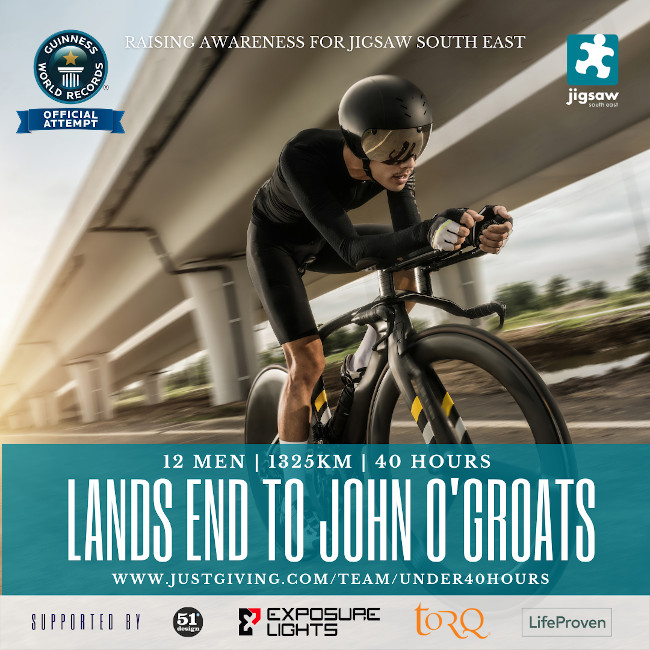
The fitness of the riders will be variable, but all have trained hard to achieve a minimum functional threshold power (FTP) of 285 watts (the power they need to hold for an hour) and some of the larger riders will be producing significantly more power than this. This kind of power output equates to over 1,000 calories per hour in energy expenditure and due to the intensity of the riding, many of these calories will be coming from carbohydrate. The body has a limited supply of stored ‘endogenous’ carbohydrate (around 2,000 calories), so it’s easy to see how after a couple of FTP efforts (and each rider will need to do 3-4), these stores are going to be very low indeed. What happens if a rider’s endogenous stores run dry? They will bonk, or hit the wall, which is when all of the power in their legs will disappear and if this happens to any rider during the attempt, the pace will slow and the World Record will be in jeopardy. To understand how and why we ‘hit the wall’ and why fuelling with carbohydrate is so important, please take the time to watch this really useful video:

As the video demonstrates, consuming carbohydrate during each FTP effort is going to be vital, because literally every gram of exogenous (energy product) carbohydrate consumed whilst riding is a gram that is spared from their endogenous stores and the more that is consumed, the greater the endogenous savings. Quite simply, the exogenous fuel source is burned in preference to the stored carbohydrate. There is of course a limit to the amount of carbohydrate the human body can absorb and use in an hour and this is where the formulation of TORQ’s energy products excel. Our 2:1 Glucose Derivatives:Fructose formulations are capable of delivering significant amounts of carbohydrate into the blood per hour and we have long recommended up to 90 grams of carbohydrate per hour via TORQ’s Fuelling System. Remember that’s 90 grams of carbohydrate (360 calories) that won’t be taken from the riders’ endogenous stores, leaving them less depleted at the end of each bout. This is effectively free energy that they can take forward onto their next effort.
Recently in an article written on this website, we revealed that more recent research has suggested that 120 grams of carbohydrate absorption per hour is likely to be possible using TORQ’s 2:1 formulation and although we have been naturally cautious with this advice up until now, this seems to us to be the perfect environment to recommend it. In practical terms, due to the nature of the exercise being carried out, there would be no obvious downside to each athlete consuming 120g of carbohydrate in the hour that they exercise. Endurance events typically requiring fuelling last for significantly longer than an hour, so consideration needs to be given to the amount of carbohydrate consumed hourly, because over-consumption over a longer timeframe would result in carbohydrate not being absorbed, leading to gastric distress. We have previously written an article on the subject of fuelling and avoiding gastric distress and one key message is not to over-consume. The benefit of this challenge is that the riders will only be exercising for around 1 hour and then they will get a decent sized break, so the risk of gastric distress is low – and if it were to happen, it can be easily combatted during the rest period, which we will discuss shortly. So, to be clear, the research suggests that 120g of carbohydrate absorption per hour is possible and the format of the event protects the riders from any potential pitfalls. As a caveat, should a rider struggle with this level of consumption, we would recommend that they revert to 90 grams of carbohydrate consumption on their subsequent effort, which is still significantly higher than other commercially available formulations are able to deliver.
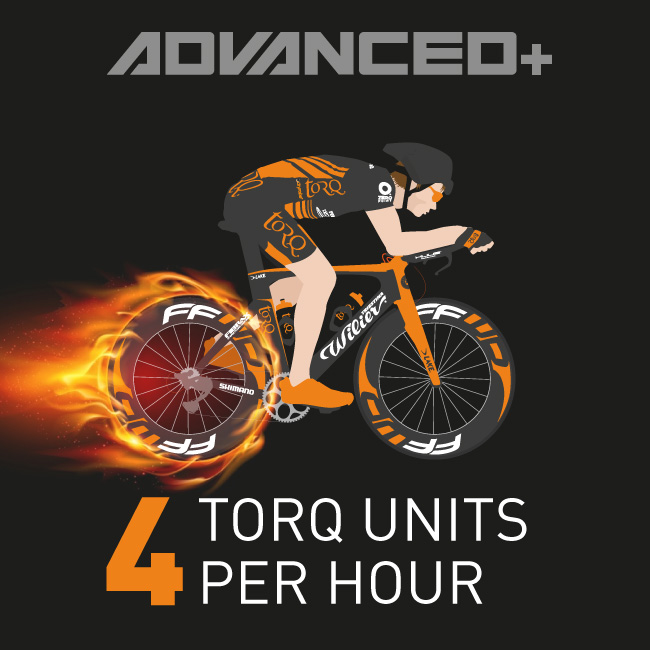
Therefore, the recommendation to the riders will be simple (largely because the TORQ Fuelling System is simple) and that will be to consume 4 TORQ units (120 grams of carbohydrate) per 1-hour effort. Each TORQ Unit equals 30g of carbohydrate. To achieve this, the rider will be asked to consume 1 TORQ Energy Gel immediately before they start their effort and then another at 20 minutes and another at 40 minutes into the ride (that’s 3 TORQ Units). They will also have a 500ml bottle of TORQ Energy Drink on their bike, which they will be advised to consume in its entirety. 500ml of TORQ Energy is also 1 TORQ Unit. 4 TORQ Units in total. Should they choose to revert to 90 grams per hour (3 TORQ Units), we recommend 1 TORQ Gel immediately before they start their effort and one 30 minutes into their effort (that’s 2 TORQ Units), plus 500ml of TORQ Energy which they should drink in its entirety. 3 TORQ Units total. As this event allows the riders breaks between efforts, the nutritional recommendations can be clear cut like this, which is really helpful. Usually we recommend an adaptive strategy via the TORQ Fuelling System, because the level of hydration a rider will need is variable, but with this event there’s enough time between bouts to rehydrate if necessary. What the riders will only have one chance to do is get the carbohydrate in and they can’t afford to miss a feed.
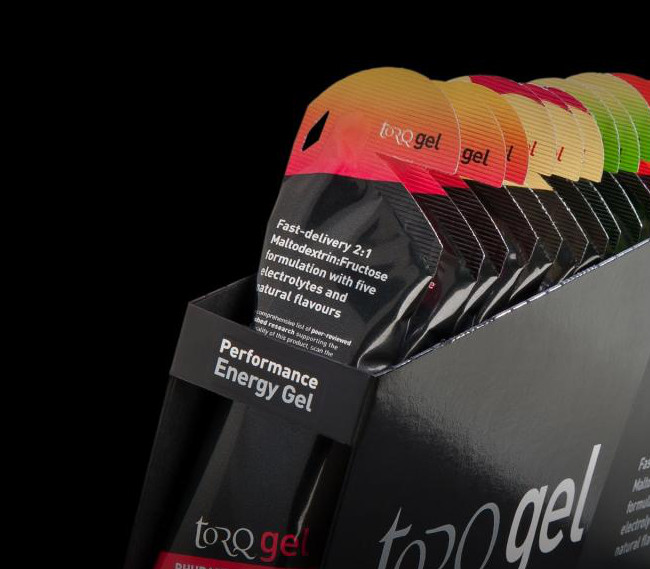
We are not recommending consuming TORQ Energy Bars or Chews, because they are not practical fuelling products for these kinds of efforts – the fuel intake needs to be quick, slick and easy. TORQ Bars and Chews will be used during the break period, not on the bike.
There is a danger that some riders might think that moving from their aero position or letting up slightly to take on fuel is going to cost them valuable seconds and this could dissuade them from fuelling properly. The message we are firmly getting across is the need to look at the bigger picture – would you rather lose 30 seconds as a result of reaching into your pocket a couple of times to consume gels in the early stages, or risk losing minutes in time when you blow up spectacularly on effort 3 because you ignored the fundamental principles of fuelling?
That’s fuelling during exercise covered off, so what do the riders do in their downtime between bouts? The first product they will be consuming will be TORQ Recovery Drink. There’s a narrow window immediately after exercise where physiologically, absorption of carbohydrate is heightened in the same way that it is during exercise, so capitalising on this window of opportunity is very important. During the effort the rider fuels to provide an alternative exogenous source of carbohydrate to preserve their internal endogenous stores, whereas after exercise, the carbohydrate they consume is used to re-stock those stores. They are 2 completely different processes, but it should be quite clear how important it is to tackle both of them. The restocking of endogenous carbohydrate stores doesn’t stop with a recovery drink either, the rider will be encouraged to graze on high carbohydrate, low fat foods constantly during their downtime.
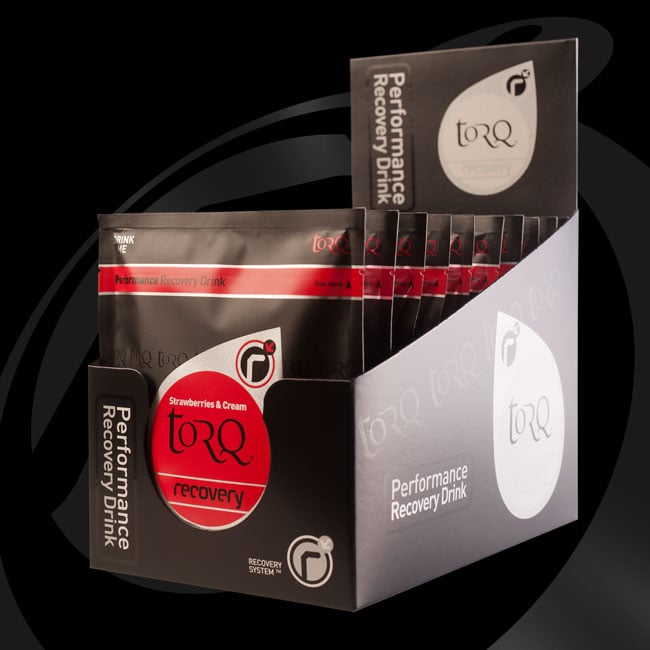
The other vital nutrient that TORQ Recovery Drink offers is protein. The riders will need to consume 20-25 grams of protein every 4-5 hours to maintain a positive protein balance to prevent muscle breakdown/facilitate muscular repair and the recovery drink provides one of those portions. Depending on how the rotations work for each rider (they are all slightly different), the recovery drink may be the only source of protein needed during the event. Riders with longer breaks between bouts will need to look at some sensible protein-based food choices too. If you would like to learn more about the role that protein plays in the human body and how important it is to athletes, read our Protein, Performance and 20-25g Protein Recipes article.
What we would typically call ‘normal food’ certainly has its place and will be encouraged during the event, but careful considerations will need to be made. Fat is the enemy on event day, so however much a rider is craving a burger or chocolate cake, these items are outlawed! Fat will kill any rider’s performance and it’s a simple concept to understand – fat blocks the absorption of other nutrients. That’s not to say that you won’t absorb the nutrients eventually, but dietary fat slows down the absorption so much that any optimal performance nutrition practices being followed will be negated. Not only this, but the gastric problems we were concerned about with regard to overconsumption of carbohydrate will be pretty much guaranteed and can’t be resolved quickly, if at all. To absorb the significant 90 to 120g of carbohydrate per hour required, the points of absorption in the small intestine need to be clean and clear and fat will block them. It’s like running the tap in the bath with the plug in – eventually it will overflow and overflowing in the context of performance nutrition means throwing up! We want the tap running, with the plug out. With the plug inserted, all the good stuff your body needs can’t get in, so it’s game over.
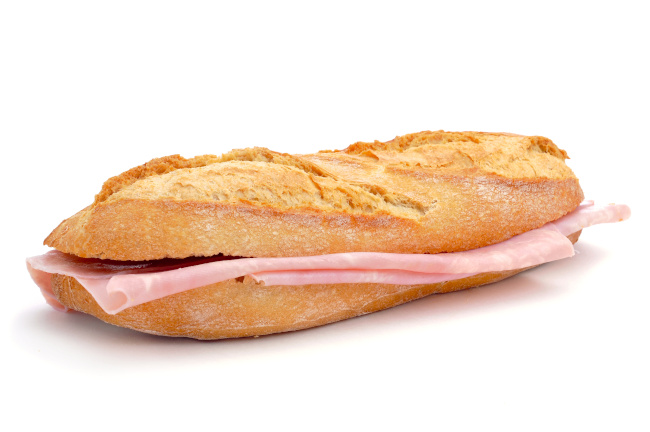
If the riders are going to consume ‘real food’ they need to make low fat choices. Their food should be viewed as a vehicle to deliver 20-25g of protein when required and it should be in the leanest possible form (a lean ham or tuna sandwich for instance). It sounds pretty clinical, but at the end of the day, this is just one day and the riders can have as much cake and beer as they want when they’ve set the record – during the challenge they will need to be disciplined. So, outside of fuelling whist riding, during ‘down time’ as such, the rider will need to ensure that they take on board 20-25g of lean protein every 4-5 hours. TORQ Recovery Drink counts as one of these protein hits, plus they will be provided with 3 TORQ SNAQ instant 3:1 Breakfasts and each of these contains 25g of high quality protein. If they have one at the start of the day, they won’t need to think about protein again for another 4-5 hours. The combination of these breakfasts, recovery drinks and some well-chosen regular food choices containing 20-25g of protein and the riders’ protein needs are dialled. Spaced around these protein feeds, the riders will be encouraged to graze on carbohydrate-rich low fat foods which includes anything from TORQ Energy Bars and TORQ Energy Chews through to snacks like popcorn and even wine gums. A savoury favourite of ours at TORQ are Snackajacks too. Essentially, as long as they are high carbohydrate and low fat, the riders should be grazing on them. One important point to note is that should a rider’s 4-5 hourly protein feed coincide with the start of their next effort, they should NOT consume protein. 5-6 hours between protein feeds is fine, so they should delay their feed until after their 1-hour bout and consume TORQ Recovery immediately, which will deliver the protein they need anyway.
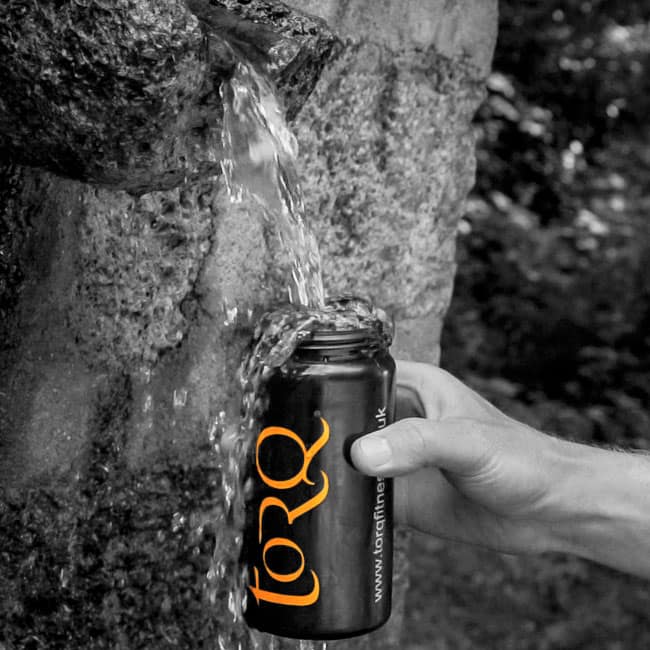
We discussed the possibility of gastric issues from overconsumption of calories earlier and the solution is simple. Stop eating and drink plain water until the stomach has settled – something we have learned over years of working with athletes taking part in extreme events. Ceasing food intake and turning to water-only very quickly turns the problem around and the rider should suddenly regain their appetite and reach again for food. This won’t be the case if fat has been consumed – the damage will have been done. Water actually helps with the storage of carbohydrate too, so for every gram of carbohydrate consumed, 3 grams of water is required to store it, so keeping constantly hydrated during the rest period has numerous benefits. The riders should just keep drinking.
The riders are being advised to have an ‘essentials bag’ containing all of their on-bike and off-bike nutrition and this bag needs to be with them at all times, other than when they’re riding of course. Hunger can hit like a freight train on these events, so the riders should always have their nutrition to hand. The essentials bag will also contain other non-nutrition items too, but ensuring this bag exists and is with the rider forms a vital part of the logistics behind this event.
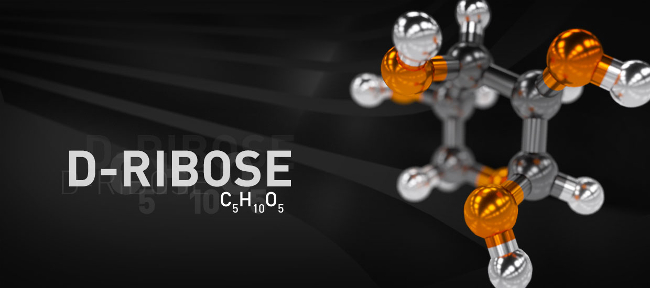
Finally, the only other nutritional product to mention before we end this article is TORQ Ribose. Ribose is an amazing nutrient and has pretty much become a trademark of TORQ, because it has featured as an ingredient in our Recovery Drink since its conception. It has a variety of benefits, which you can read about HERE, but essentially it re-energises the muscle cells very quickly (340 to 430% quicker than without) and does an amazing job at preventing muscle cramping. A research-recommended dose is included in our recovery drink, but we’re going to be advising riders to add an extra scoop to their recovery drink and a scoop in every on-bike drink bottle (containing TORQ Energy Drink) they mix.
The only other area to highlight is carbohydrate loading prior to the event. This ensures that the endogenous stores of carbohydrate are fully stocked, which represents the perfect start point for any athlete during this kind of event. Although there are a variety of protocols out there, this one recommended many years ago from the Australian Institute of Sport is a format that we at TORQ support. The text below is taken from the Pre-Race Nutrition section of our 24-Hour Race Nutrition resource:
24 hours prior to the start of your event, either jump onto your bike or pull on your trainers and pedal/jog to a flat piece of road, or slight hill that’s going to give you enough space to push hard for 3 minutes without stopping. Alternatively, you could do this on a turbo trainer, exercise bike or treadmill. Warm up for 5 minutes and then produce one all-out 3-minute effort as hard as you can producing as much lactic acid as you can possibly tolerate. Immediately afterwards, consume a recovery drink whilst keeping your legs ticking over gently and then for the rest of the day ‘load in the carbs’. Eat everything and anything, but think ‘carbs’ so when you’re bored of the starchy carbohydrates, eat a bag of wine gums. Remember your regular intakes of protein, but carbohydrate is king for today. Don’t forget to have one last high carbohydrate feed before you go to bed and that’s essentially your pre-race nutrition nailed down. The table below shows a suggested carbohydrate loading regimen for a 62Kg person:
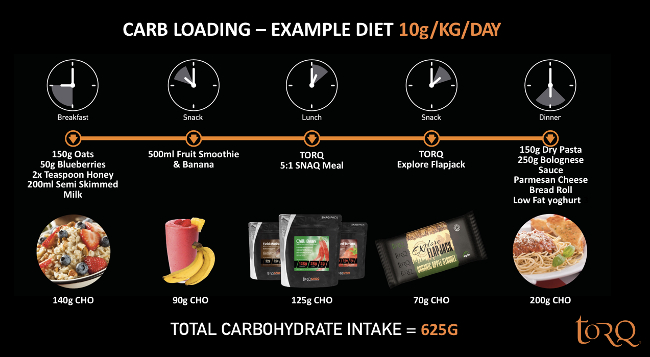
Here’s a final summary of the key points the riders will need to address:
# Start the carbo-load procedure 24 hours prior to their first ‘effort.’
# Fuel during exercise with 90-120g of carbohydrate per hour with TORQ’s optimised products.
# Consume TORQ Recovery Drink immediately after completing an effort.
# Consume 20-25g of protein every 4-5 hours throughout the event, beginning with a protein/carb feed first thing in the morning.
# ‘Normal food’ should contain 20-25g of lean protein and be very low in fat.
# Graze on low fat high carbohydrate food sources between bouts.
# Don’t consume protein less than an hour before a bout, delay the feed until after the effort.
# Consume minimal fat from the moment of waking, until the event has finished.
# Drink plenty of water/TORQ Energy Drink between efforts to maintain hydration and support the storage of carbohydrate.
# Don’t over-consume on calories and if there are signs of gastric upset at any point, stop eating and revert to drinking plain water until hungry again.
All of the riders are really excited by this challenge and hope to get a Guinness World Record certificate at the end of it, but they’re also riding to raise money for the Jigsaw South East charity which supports bereaved children, young people and their families and those affected by a family member having a terminal diagnosis. If you’re reading this and can spare £5 (or as much as you can afford) to support this valuable charity, please click HERE to donate on Matt’s Just Giving Page.

Sophie Bewley, Jigsaw’s fundraising lead said:
“We couldn’t be more grateful for the support of the LEJOG team, whose fundraising efforts will be a huge support to the charity as we continue to see an increasing number of children needing our support. Our income was hit heavily by the impact of the pandemic, but we strive to continue to be there for every child that needs us. With the support of fundraisers like this incredible team, we know we can continue to do so.”
You will be able to track the riders as they move up the country from 3am on Saturday morning by clicking here. The team’s progress will be updated in real time via TORQ’s social media channels, primarily on Facebook and Twitter, so tune in over the weekend to keep in touch and see how they’re getting on. We will of course update you when it’s all over.
Getting the most out of the riders’ performance during an event like this is clearly vital and it will require a significant level of nutritional discipline on their part, but it’ll be worth it. They want to take the World Record and we’re pretty sure they’re already looking forward to the beer at the end – the reward for 40 hours of dedication!








